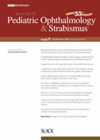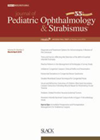
Journal Reviews
Description of surgical modification for heavy eye syndrome
For heavy eye syndrome, these authors report a modification to facilitate approximation of the widely separated muscles using a combination of zip-up and hand-over-hand manoeuvres. Ten patients underwent this surgery with unification of the superior rectus and lateral rectus muscles....
Myopia progression with atropine and different treatment lenses
This study aimed to determine the effectiveness of low dose atropine at inhibiting myopia progression, the possible additive potency of this treatment combined with either of two peripheral defocus contact lenses over three years of therapy, and whether there was...
Medial rectus inferior half plication surgery for near exotropia
In this study the authors report a relatively new surgical treatment for near exotropia. The study included 17 patients: four with previous surgery and all with medial rectus injection of bupivacaine to reduce the angle of deviation. Treatment involved inferior...
ChatGPT response accuracy for amblyopia and childhood myopia questions
With the increasing use of ChatGPT by the public to obtain information, the authors of this study aimed to critically evaluate the scientific quality of the responses to frequently asked questions about amblyopia and childhood myopia. They submitted 27 and...
TikTok video accuracy for paediatric ophthalmology videos
The purpose of this study was to systematically assess paediatric ophthalmology related TikTok videos based on author type, gender, content and engagement, and characterise the quality, medical accuracy, understandability and actionability of educational content. Search terms included adult strabismus, amblyopia,...
Using modified staging criteria to determine optic nerve invasion in retinoblastoma
This paper reports the use of a modified staging criteria for optic nerve invasion in extraocular retinoblastoma and its correlation with treatment outcomes in 21 patients. The average age at presentation was 41 months (7–120) and there were 14 unilateral...
Choroidal changes after horizontal strabismus surgery
The aim of this study was to investigate choroidal changes in the short-term by looking at the choroidal vascular layer after horizontal strabismus surgery. This was a retrospective study of 27 patients: 12 females and 15 males with mean age...
Choroidal changes in multisystem inflammatory syndrome in children
This study aimed to evaluate the vascular structure of the choroid in multisystem inflammatory syndrome in children (MIS-C). This was a prospective study of 38 eyes of 19 patients and 60 eyes of 30 healthy controls. None had ocular pathology....
OCT measurements in neurodevelopmental conditions
The authors aimed to investigate what changes occur in the retinal nerve fibre layer (RNFL), ganglion cell layer (GCL) and macula when specific learning disorder (SLD) comorbidity is added to attention deficit hyperactivity disorder (ADHD). They compared measures in three...
Function vision outcomes in pseudophakic children
This study evaluated the functional vision of 196 pseudophakic children and their carers treated at a tertiary centre in Southwest Nigeria and identified association factors. Mean age was 9.8 ±3.4 years (range 2–16) with 68.9% male and 31.1% female. Median...
Efficacy of BT as a treatment for cranial nerve palsy in acute and chronic cases
The authors performed a meta-analysis of all patients’ treatment with botulinum toxin (BT) for cranial nerve palsy (CNP) to determine the efficacy of BT in the treatment of CNP due to a variety of causes. The search identified 1129 articles...
What characteristics are linked with adolescent blindness and severe visual impairment
The authors present a retrospective cohort analysis which aimed to characterise the risk factors for adolescents being blind or severely visually impaired. The publicly available National Survey of Drug Use and Health (NSDUH) was used as the data source and...







